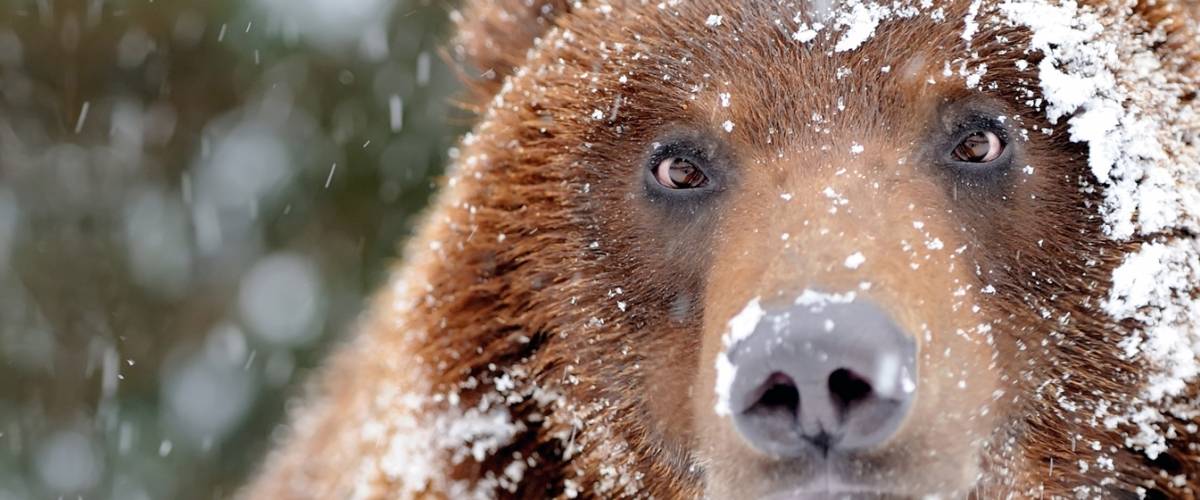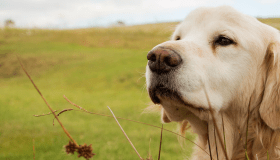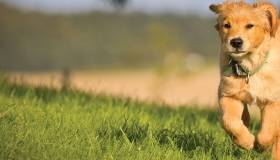
November 27, 2018 – Wind blowing. Leaves rustling. Betsy Robinson and her husband, Steve Gehman, researchers and Morris Animal Foundation monthly donors, are on the hunt for tell-tale signs of grizzly bears. They want to learn how far the animals are moving westward out of Yellowstone National Park. In the park, the bears are protected, but outside the park, they are not.
“While our work doesn’t involve disease studies, as a researcher I deeply understand the need for supporting wildlife research and getting the word out about the science that helps animals,” Betsy said. “It’s so rare to find an organization that funds entire wildlife projects, from start to finish, and helps educate the public. I support Morris Animal Foundation because wildlife researchers simply need more funding to help more animals. There’s just a vast amount of work to be done and not enough resources to go around.”
Betsy was introduced to Morris Animal Foundation not as a researcher, but as a concerned golden retriever owner. Her dog had died of hemangiosarcoma, a fatal cancer, and she was looking for information on the disease. Her search led her to the Foundation’s Golden Retriever Lifetime Study, a project aimed at finding risk factors for four major cancers, including hemangiosarcoma, and other diseases in dogs. As she learned more about the groundbreaking study and its cancer focus, Betsy also learned more about the Foundation’s broader mission, bridging science and resources to advance the health of ALL animals, including her beloved wildlife.
“If we want to give more to the animals, we need to educate ourselves and others about some of the harsh realities that wildlife face today,” said Betsy. “Having accurate, science-based information and sharing that information with the public is what my husband, I and Morris Animal Foundation do every day to help the animals we love.”
Betsy and Steve started their predator survey project more than 20 years ago, before anyone had any idea how many grizzlies lived up and down the wildlife corridors from one protected park to the next. Their work has helped fill vital data holes to help educate people and protect not only grizzly bears, but other at-risk carnivores including wolverines, lynx, fishers and other rare species along the northern Rocky Mountain range. More science and more knowledge about wildlife activities within these corridors translates to more protection for species critical to maintaining nature’s balance and health.
“When doing our wolverine or lynx research in the winter, we are looking for tracks. For grizzlies that hibernate, it’s a little different. We are out looking for rub trees in the summer and fall,” said Betsy. “Adult male grizzly bears use these trees to communicate with each other, a way of marking their territories and making themselves known to other bears in the area. When we find a tree, we collect hair and scat samples that we ship off to biologists to help record and map out how many bears live in a certain area. If we don’t know where the animals live, we can’t help them.”
Ultimately, the survey information Betsy and Steve gather helps resource managers and conservationists protect vital forest habitats and preserve biological diversity. The work is hard but rewarding. Sometimes, their two golden retrievers, Dusty Rose and Wylie, come along as co-investigators.
“The dogs quickly figured out what we were looking for,” said Betsy. “They often find the rub trees before we can. They are incredibly smart. They make the work easier and fun.”
This holiday season, Betsy urges all of us to take a little time and pay attention to the animals in our lives and around the world. Join her to help keep bears, eagles and at-risk species, and your beloved pets healthy for generations to come.




